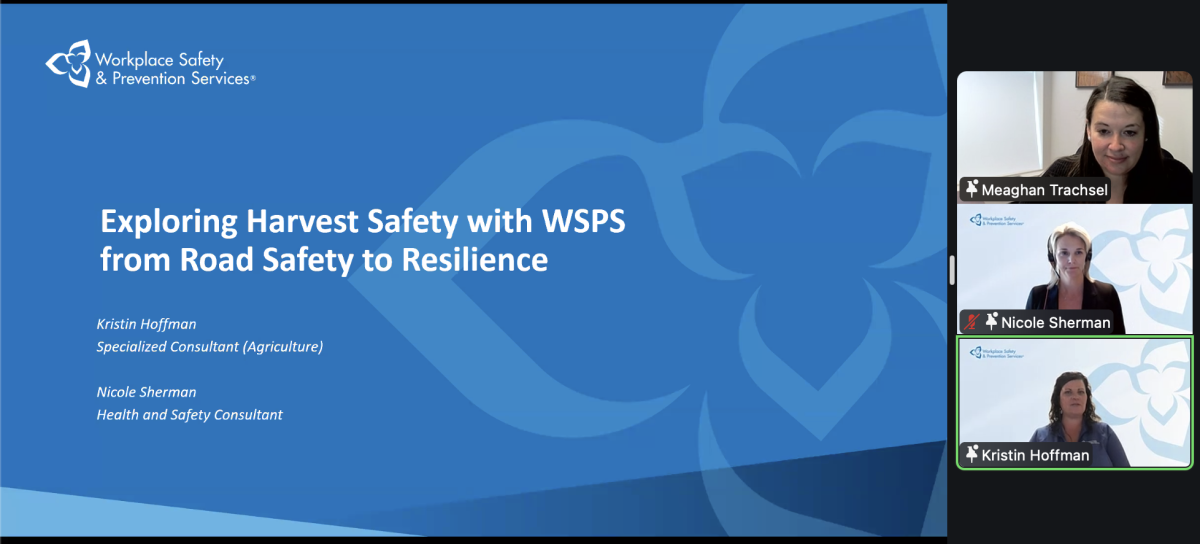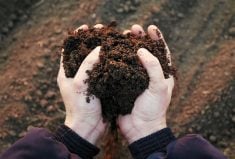We welcome your comments on any Daily News articles you see here. Every Friday, when applicable, we’ll post the best reader comments of the week. If you’d like to submit comment on any news item you see on this site, click on “Comment on this article” at right. If you’d like your comment to be considered for this space, be sure to include your name and, preferably, your home town or municipality.
“Sask. to pay new $20 bounty on coyotes,” Nov. 10
Read Also

Exploring Harvest Safety
Kristin Hoffman of WSPS explains measures for increased farm safety around harvest season
We need a bounty on deer and elk; they do tens of thousands of dollars on my farm alone. There is wildlife compensation, but it doesn’t come anywhere near covering the loss. I would like to see an article about this problem. In my area deer populations are right out of control; mostly, only bucks are hunted, so this is very little help. — Jim Neufeld
“NFU rips Alta. Beef Producers’ refund plan,” Oct. 29
Surprise! The NFU getting antsy about getting the checkoff money back. I don’t blame ABP for making this process one that requires some effort and thought. At least there will be an audit trail to allow for some analysis. I support the ABP’s process. I don’t see a way to get my share of the $11 million plus tax dollars back from ALMA, which I don’t support. Guess I should have moved to Leduc and applied for a job there. — Morgan Wilson
“Study rips B.C. farmland reserve as ‘failure,'” Oct. 20
Diane Katz, the report’s author, makes repeated reference developments in biotechnolgy and greenhouses that significantly increase produce yields. The inference is crystal clear; she is suggesting these “advancements” diminish the need for farmland to produce food. She has ignored the widespread concerns about bioengineered food or the concerns about energy demands of greenhouses, and their impacts on food pricing and climate change. She ignores the fact that we share the province’s foodlands with hundreds of wildlife species.
The strongest premise of the Fraser Institute’s report is that the ALR has made housing unaffordable in B.C. She’s right about B.C.’s farmland contributing to high property prices, but not because it restricts development. For more than two decades, research has consistently indicated that greenspace elevates property values. There is no shortage of land for housing or commerce. We just have to start making better use of the land that we have — and that’s not hard to do, because we have been flagrantly wasteful for the last 40 years.
Ms. Katz carefully selected a handful of references to support her conclusions and ignored vast bodies of information about B.C.’s Agricultural Land Reserve, agricultural, economic and environmental trends. She failed to mention that other jurisdictions (including Ontario and Quebec) are now madly trying to put in land reserves, for foodlands and wildlife habitat.
She’s right about the problem that farming is not drawing the number of new generation farmers that we need. But dismantling the ALR does not address that problem.
Ms. Katz makes a wildly flawed assumption that British Columbians will be able to rely on imported food indefinitely. She doesn’t appear to be aware that of the 52 per cent of food B.C. imports, our largest supplier is California, an area that experienced drought conditions for three consecutive summers.
Most offensive of Ms. Katz’s assertions were the listing of a handful of examples of health-related issues arising from local produce. It is a weak and insulting argument, and is not balanced by the overwhelming environmental health concerns associated with imported food.
Her statement in the report that “British Columbia was not made for farming” is a clear indication she has no idea what she’s talking about and she probably has never seen Chilliwack’s towering corn fields, the ranches of the Cariboo and the Kootenays, the orchards and vineyards of the Okanagan, the cranberry bogs of the Fraser Valley flood plain (which provide Ocean Spray with approximately 30 per cent of its annual crop), the potato farms of Pemberton “Spud Valley” (which produces more varieties of seed potatoes than anywhere else in the world), the dairy farms of Abbotsford or the berry fields of Langley Township, where the combination of soil and climate provide some of the best berry growing conditions in North America. In that one statement the Fraser Institute surrendered all credibility on this subject and secured its reputation as an organization that is both obscure and ridiculous. — Donna Passmore, Farmland Defence League of B.C.
“Editor’s pick: Where they grow our junk food,” Oct. 13
This article, written like a good left-wing journalist, finds fault and gives no solutions other than another bureaucracy such as a ministry of food. You must realize that you cannot defeat the marketplace, only distort it for a time, and when it snaps back it will bite you in the butt. It is people who are driving the agriculture issue and buying what they like, such as deep-fat-fried chips and sugared drinks such as pop. Until they decide to do something about their weight, their diabetes, et cetera, it will not happen. Too many people are narcissists and completely selfish, want cheap food and what tastes good to them (salt, fat and sugar). It won’t change until the population changes and the farmers, being businessmen, will supply what sells and allows them to survive as farmers. As a farmer I supply what I can grow and sell. Very simple. — Robert Hauswirth














